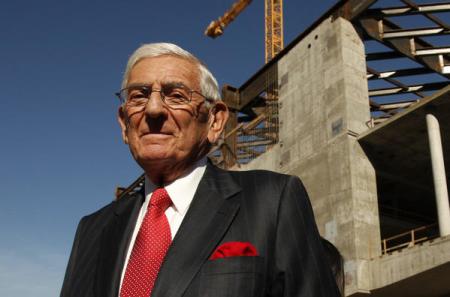Archive for the ‘LACMA’ Category
The Art & Technology and Program
LACMA
When I read the news this week that LACMA is bringing back its legendary Art and Technology Program, I basically freaked out. But before I get into the new program I wanted to re-explore the original program. (I knew this grad school paper would come in useful for something.) I gleefully just re-read the program’s catalogue: A Report on the Art and Technology program of the Los Angeles County Museum of Art. Long title, amaaaaazing read.
ART AND TECHNOLOGY PROGRAM, 1967 – 1971
In 1967, the five-year-old Los Angeles County Museum of Art began a multi-year project called The Art & Technology Program. The Program placed artists into residencies within technology companies with the intention that these corporations facilitate and/or fabricate the creation of new works, which would be shown in a culminating exhibition at the museum. The Art and Technology Program was the brainchild of LACMA’s curator of Modern Art, Maurice Tuchman. Read the rest of this entry »
Chapter 2 (Part 3): Venture Philanthropy & Other Styles of Giving
“Andrew Carnegie said, ‘He who dies with wealth dies in shame.’ And someone once said, ‘He who gives while he lives also knows where it goes.’”[i] – Eli Broad
Eli Broad’s power is tolerated because it remains remarkably unchallenged. This seemingly monopoly of philanthropic power led Christopher Knight to compare Broad to another infamous, Los Angeles art patron:
[Norton] Simon’s flirtations with giving [his] collection away (to at least seven institutions); distrust of traditional museum management; engineering of a bailout of an artistically adventuresome but financially faltering institution (the old Pasadena Museum for Simon, MOCA for Broad); later deciding to open his own museum, and more…[ii]
Another similarity to Broad: Before Norton Simon’s takeover of the Pasadena Art Museum, Simon had intended to establish his collection as a lending organization. Taking control of the Pasadena Art Museum proved irresistible to Simon, and today the Norton Simon Museum rarely loans works. I seriously doubt unfounded rumors that Broad has some kind of evil master plan to takeover or somehow combine his collections with MOCA.
Broad can also be measured to his contemporaries. Los Angeles is not actually a one-philanthropist town. “Pomegranate Queen” Lynda Resnick is an easy comparison. Like Broad, Resnick is a long-time donor and trustee of LACMA. Like Broad, she and her husband provided funds ($54 million) for a Renzo-Piano-designed building at LACMA. The Lynda and Stuart Resnick Pavilion was part of Phase 2 of LACMA’s Transformation and sits directly north of BCAM. When the pavilion opened in October of 2010, one of three inaugural shows was gleaned from the Resnick’s private collection.
Chapter 1 (Part 1): One Eli Broad Too Many, Or Not Enough?
“Eli is not the problem. The problem is that we don’t have enough Elis in Los Angeles to balance out his generosity and the power of his influence.”[i] – Ann Philbin, Director, Hammer Museum
Photographs of Los Angeles from fifty years ago capture an unfamiliar city. In the 1960s, downtown’s Bunker Hill was still occupied by a row of quiet Victorian houses. Since then, the Victorians have been cleared away and the city has experienced a population boom often illustrated as a mushroom cloud-shaped diagram, and now boasts a population of 9.86 million.[ii] While established in many ways, Los Angeles’s philanthropic culture is still in its infancy. Despite ranking the second most populous city in America, the quantity of powerful philanthropists is insignificant at best. Those who are active give to educational, environmental, health, and political causes.




